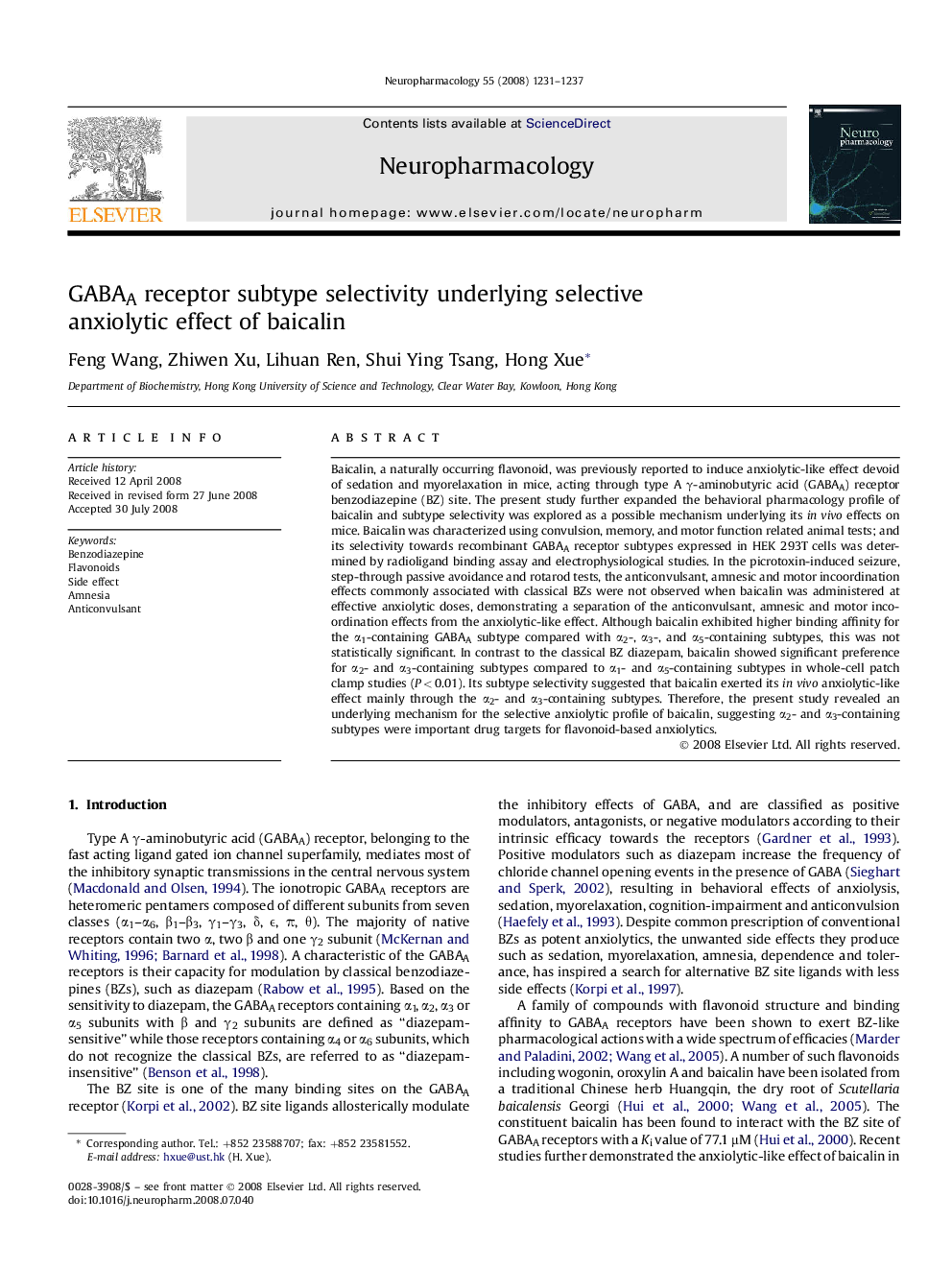| کد مقاله | کد نشریه | سال انتشار | مقاله انگلیسی | نسخه تمام متن |
|---|---|---|---|---|
| 2494541 | 1115569 | 2008 | 7 صفحه PDF | دانلود رایگان |

Baicalin, a naturally occurring flavonoid, was previously reported to induce anxiolytic-like effect devoid of sedation and myorelaxation in mice, acting through type A γ-aminobutyric acid (GABAA) receptor benzodiazepine (BZ) site. The present study further expanded the behavioral pharmacology profile of baicalin and subtype selectivity was explored as a possible mechanism underlying its in vivo effects on mice. Baicalin was characterized using convulsion, memory, and motor function related animal tests; and its selectivity towards recombinant GABAA receptor subtypes expressed in HEK 293T cells was determined by radioligand binding assay and electrophysiological studies. In the picrotoxin-induced seizure, step-through passive avoidance and rotarod tests, the anticonvulsant, amnesic and motor incoordination effects commonly associated with classical BZs were not observed when baicalin was administered at effective anxiolytic doses, demonstrating a separation of the anticonvulsant, amnesic and motor incoordination effects from the anxiolytic-like effect. Although baicalin exhibited higher binding affinity for the α1-containing GABAA subtype compared with α2-, α3-, and α5-containing subtypes, this was not statistically significant. In contrast to the classical BZ diazepam, baicalin showed significant preference for α2- and α3-containing subtypes compared to α1- and α5-containing subtypes in whole-cell patch clamp studies (P < 0.01). Its subtype selectivity suggested that baicalin exerted its in vivo anxiolytic-like effect mainly through the α2- and α3-containing subtypes. Therefore, the present study revealed an underlying mechanism for the selective anxiolytic profile of baicalin, suggesting α2- and α3-containing subtypes were important drug targets for flavonoid-based anxiolytics.
Journal: Neuropharmacology - Volume 55, Issue 7, December 2008, Pages 1231–1237